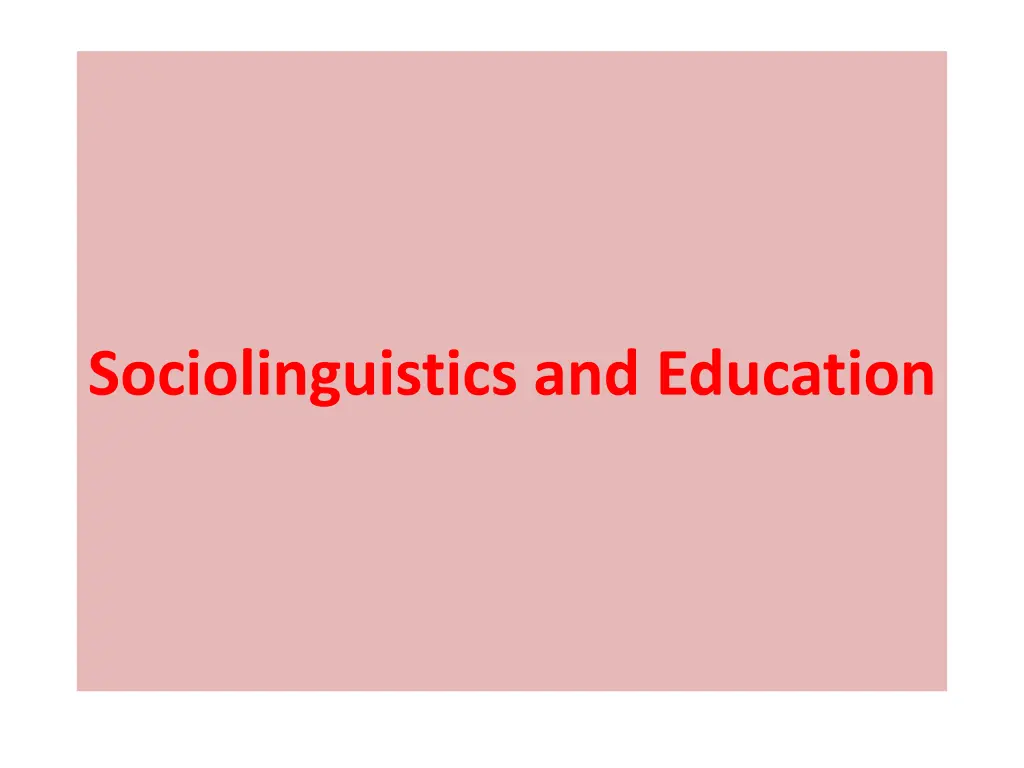
Sociolinguistics and Education: Issues, Implications, and Decisions
Explore the intersection of sociolinguistics and education, uncovering issues like bilingualism, language variation, and language planning. Discover the impact on curricula design and educational policies in multilingual societies. Delve into debates surrounding bilingual education and the significance of language in educational contexts.
Download Presentation

Please find below an Image/Link to download the presentation.
The content on the website is provided AS IS for your information and personal use only. It may not be sold, licensed, or shared on other websites without obtaining consent from the author. If you encounter any issues during the download, it is possible that the publisher has removed the file from their server.
You are allowed to download the files provided on this website for personal or commercial use, subject to the condition that they are used lawfully. All files are the property of their respective owners.
The content on the website is provided AS IS for your information and personal use only. It may not be sold, licensed, or shared on other websites without obtaining consent from the author.
E N D
Presentation Transcript
What issues do appear to the surface when sociolinguistics is coordinated with education?
The following issues do appear to the surface when sociolinguistics is coordinated to education: Bilingualism & Multilingualism Language & Power Linguistic Variation Language planning
So, these four issues represent the core of the relationship between sociolinguistics and education. They have to be paid much attention by curricula designers who in turn represent the educational policy of their states/countries.
In a multilingual society, educationalists and curricula designers have to make decisions as to which language variety or dialect be used as the language of the texts to be taught and the language of instruction as well.
Some countries of the world resort to the compromise of bilingual education whose main concern is to use two languages of instruction at some point in a students school. The languages are used to teach subject matter content rather than just the language itself.
However, some sociolinguists believe that bilingual education is not politically neutral instructional phenomenon. Where assigning one language as the main medium of instruction and another one as subsidiary in a state funded school system confers recognition and status of these languages and their speakers.
Language in all its societal, variational, interactional and cultural diversity both influences and is influenced by education. COMMENT
Education is the site where broad social and political forces are reflected in the kinds of educational opportunities offered to speakers of different language varieties and language use mediates the participation of these speakers in those opportunities and, ultimately, their potential contributions to the larger society.
language is a primary instrument of human communication. It gives a sense of identity to an individual as well as a social group. However, language can also be a problem and a barrier to communicate, which necessitates language planning.
Language planning refers to the efforts to deliberately affect the status, structure, or acquisition of languages. Language planning is a subset of the general field of social planning that includes a wide range of public policy concerns (housing, employment, immigration and taxation policies)
Language planning occurs in most countries by their relevant governments wherein they have more than one language within the community.
Language planning involves all conscious efforts that aim at changing the linguistic behavior of a speech community. So, it represents all deliberate steps taken towards language change.
Language planning is also an organized activity that aims at solving language problems within a community. In addition, language planning provides proposals to express language ideologies within the community
Language Policy VS Language Planning language policy is sometimes used as a synonym to language planning. However, it refers to the more general linguistic, political and social goals underlying the actual language planning process. Language policy is the expression of the ideological orientations and views whereas language planning is the actual proposal that makes up their implementation.
Four stages of Language Planning 1. Selection: the choice of language variety to fulfill certain functions in a given society. 2. Codification: the creation of a linguistic standard or norm for a selected linguistic code. It is divided into: a. Graphization b. Grammaticalization C. Lexicalization
Four stages of Language Planning 3. Implementation: promoting the decisions made in the stages of selection and codification which can include marketing strategy, production of books, pamphlets, newspapers and textbooks
Four stages of Language Planning 4. Elaboration: Terminology and stylistic development of a codified language to meet the communicative demands of modern life and technology.
